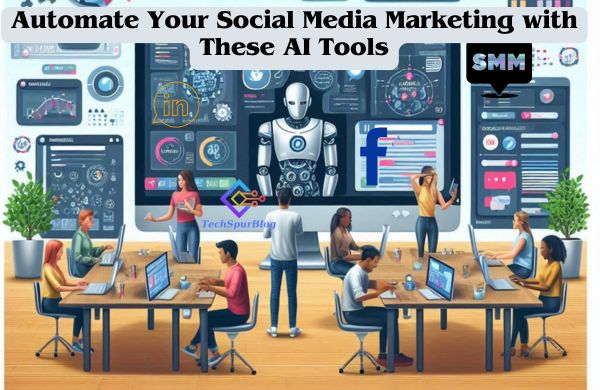By actively engaging in social media data mining, businesses gain a competitive edge and pave the way for growth and innovation. Discover the importance of social media data mining to turn valuable consumer preferences, behaviors, and sentiments into actionable strategies.
This blog exploration extends to real-world examples, offering glimpses into how businesses in diverse sectors harness social media insights to enhance operations, elevate customer experiences, and foster innovation.
By embracing this practice, businesses can stay ahead of the curve, adapt to evolving trends, and pave the way for sustained success.
Introduction
Imagine you’re a product manager at a leading technology company. One day, you notice an unexpected spike in online discussions and user reviews about a specific feature in your company’s flagship software suite.
Upon further investigation, you discover that a popular tech influencer praised this underutilized feature in a recent social media post, causing this surge in interest and demand from your user base.
This is how social media has been influencing people’s purchasing decisions lately. The reach and influence of social media platforms have grown significantly, making them pivotal in shaping consumer behavior.
They provide businesses with a wealth of data about consumer preferences, behaviors, and sentiments. However, to harness the full potential of social media data, businesses must actively mine and analyze this information.
Also Read: Five Ways Automating Social Media Can Propel Business Growth
Realizing business potential through social media data mining
As a product manager, if you were proactively involved in social media data mining, you could have identified this emerging trend and user interest much earlier.
Analyzing online conversations about your product, competitor offerings, and industry trends could have revealed the potential demand for this underutilized feature before it went viral.
This foresight would have allowed you to prioritize enhancements or marketing efforts for that specific feature, maximizing its potential and driving greater user adoption and satisfaction.
This was just one instance depicting the importance of social media data mining. However, the significance of mining this data extends across:
- Various departments of an enterprise like marketing, sales, customer service, and product development.
- Different industries, like retail, healthcare, finance, and technology, for improving operations, enhancing customer experiences, and driving business growth
If you also plan to implement social media data mining in your business, here are some real-world examples that can help you get better insights while inspiring and guiding your strategy.
Real-world examples and use-cases of social media data mining
Social media data mining in the Technology sector
Social media data mining for tech companies goes beyond simply listening to brand mentions on common platforms. Developer forums like Stack Overflow and GitHub discussions overflow with technical conversations. Here, developers troubleshoot problems, debate new technologies, and share code snippets.
By analyzing these interactions, tech companies discover industry trends, identify pain points faced by developers, and gain insights into emerging technologies that might be worth integrating into their products.
Business review sites like G2 Crowd and Capterra are another source of valuable information. Reviews on these platforms offer unfiltered user feedback on tech products and services.
Extracting data from these reviews allows tech companies to understand customer sentiment, find areas for improvement in their offerings, and track how competitor products are perceived in the market.
Also Read: Twitter Impressions UseViral: Boost your twitter Impressions
Socialmedia data mining in Retail
Moving beyond traditional market research methods, retailers leverage social media platforms to listen directly to customer conversations surrounding their products and competitor offerings.
By analyzing these discussions, retailers gain a deeper understanding of customer preferences, including style trends, price sensitivity, and buying triggers.
This intelligence empowers them to tailor their product lines, marketing campaigns, and pricing strategies to resonate more effectively with their target audience.
Social media data mining also plays a crucial role in optimizing inventory management. By analyzing online conversations about new product launches or seasonal trends, retailers anticipate customer demand and adjust inventory levels accordingly.
This proactive approach helps prevent stockouts and maximizes sales opportunities. It also allows retailers to identify influential figures within online communities who impact purchasing decisions.
Retailers forge strategic partnerships that significantly enhance brand awareness by analyzing engagement metrics and the tone of conversations surrounding these influencers’ posts.
Social media data mining in Automobile manufacturing
Automobile manufacturers leverage social media data mining for product development. For example, analyzing online forums dedicated to electric vehicles (EVs) can reveal a growing interest in features like extended battery range and innovative charging solutions.
This data allows them to prioritize research and development (R&D) efforts in these areas, ensuring future EV offerings directly address customer needs.
Similarly, identifying consistent complaints about a certain issue, like a car’s infotainment system, allows automakers to address these issues proactively through software updates or prioritize improvements in future models.
Beyond product development, manufacturers analyze social conversations to gain insights into competitor vehicle launches or customer preferences for specific features such as fuel efficiency or safety ratings.
By understanding these insights, they tailor their marketing messages more effectively. They can highlight the fuel efficiency of existing models or create targeted social media ads showcasing the upcoming launch of a new fuel-efficient vehicle.
Also Read: Optimizing Social Media Profiles: Best Practices for Influencers
Socialmedia data mining in Biotechnology
Biotechnology companies operate in a highly dynamic and competitive landscape. Analyzing discussions on medical forums, patient advocacy groups, and social media platforms reveals valuable insights into patient needs, unmet medical challenges, and public sentiment toward specific treatments.
This knowledge empowers them to identify new markets, prioritize research efforts on promising therapeutic areas, and differentiate their products in a crowded marketplace.
Social media platforms also provide valuable insights into patient experiences, side effects, and feedback on various drugs and therapies.
By mining this data, biotechnology companies identify potential areas for improvement, understand patient needs, and uncover new research avenues or drug targets.
Biopharmaceutical companies also target patients who might be suitable candidates for their clinical trials by analyzing online discussions about specific diseases and treatment experiences.
Social Media Data Mining in Fashion
In an industry where trends and customer preferences shift overnight, social media data mining is a powerful tool for fashion brands to stay ahead of the curve.
Discussions about fashion styles, beauty products, and upcoming trends on social media across platforms like fashion blogs or influencer posts contain valuable data.
This analysis can reveal insights into what clothing styles are most preferred, what colors and patterns are gaining popularity, and what features resonate most with target audiences.
With this knowledge, fashion brands can make informed decisions about design direction, product development, and collection planning, ensuring their offerings align with the latest trends and customer desires.
Analyzing online reviews, social media comments, and brand mentions can also reveal valuable insights into customer satisfaction with existing product lines, brand image, and competitor reception.
This allows fashion brands to identify areas for improvement, address customer concerns proactively, and refine their marketing strategies to resonate more effectively with their target audience.
Also Read: Humanize AI: Bridging the Gap between Artificial Intelligence and Humanity
Conclusion
These real-world applications of social media data mining prove how it has transformed from a niche practice to a powerful tool for businesses across diverse industries.
As the social media landscape continues to evolve, one thing remains certain: businesses that embrace the power of data mining will be best positioned to navigate the ever-changing digital landscape and thrive in the years to come.
By strategically leveraging this vast resource, you can make data-driven decisions that give a competitive edge, improve customer satisfaction, and ultimately deliver long-term success.


















